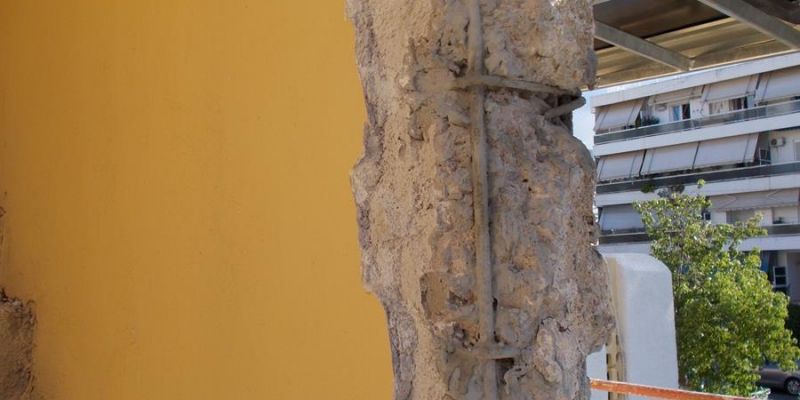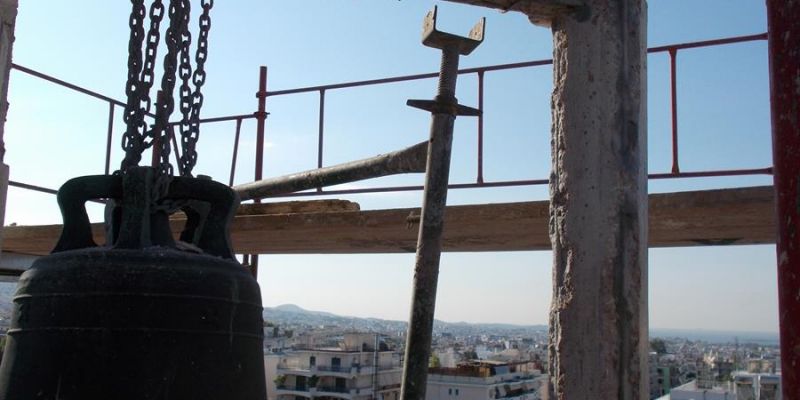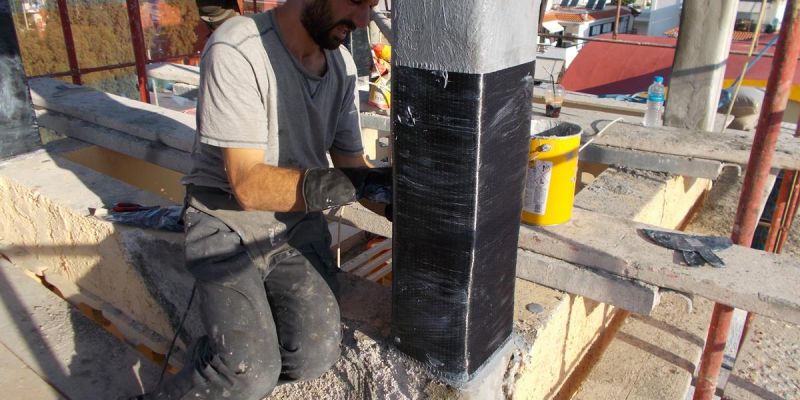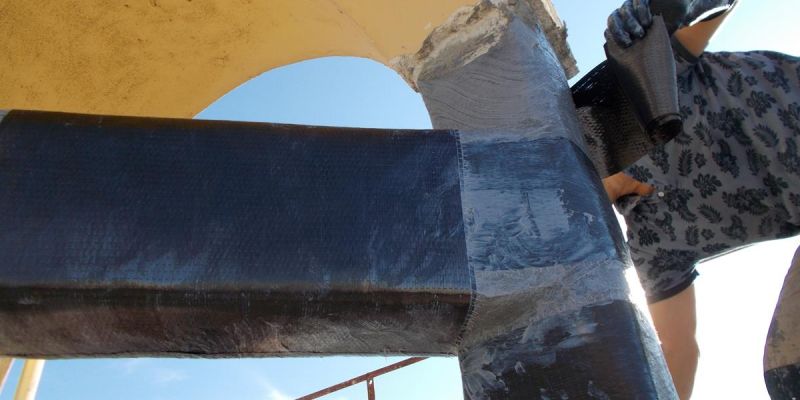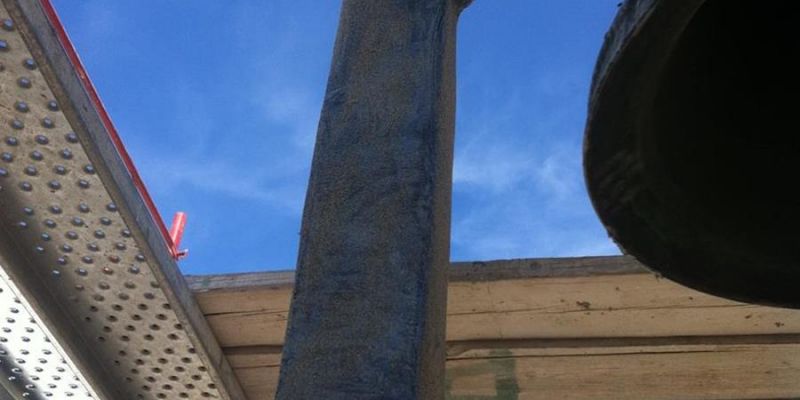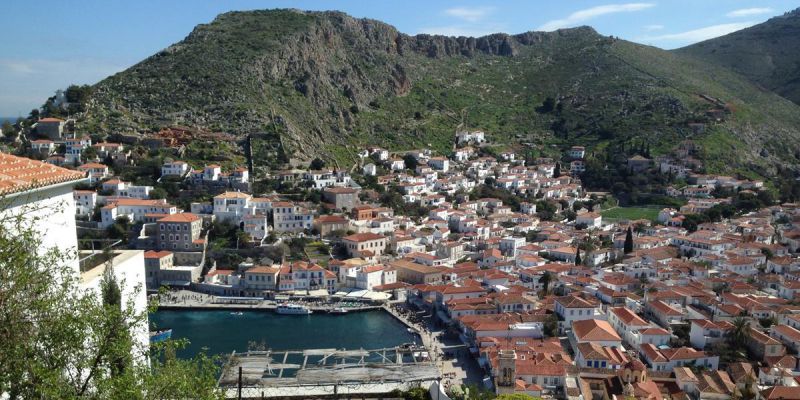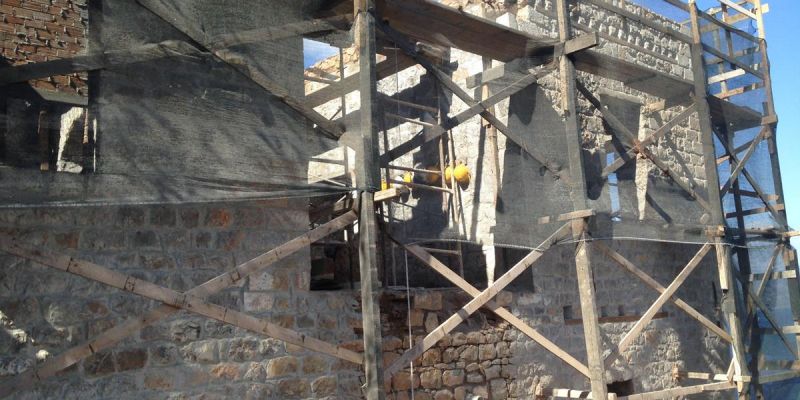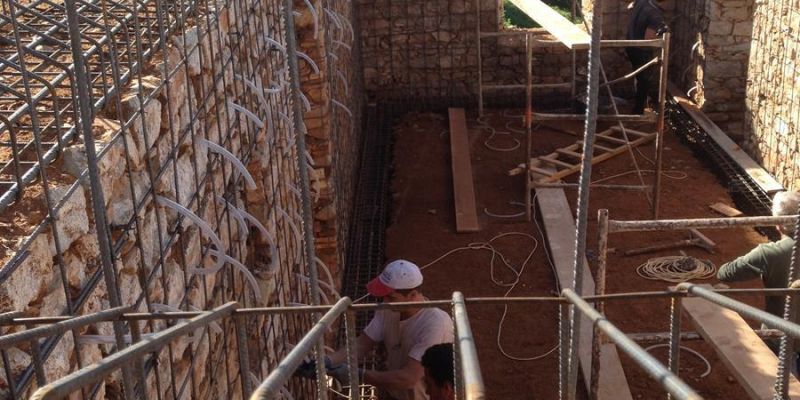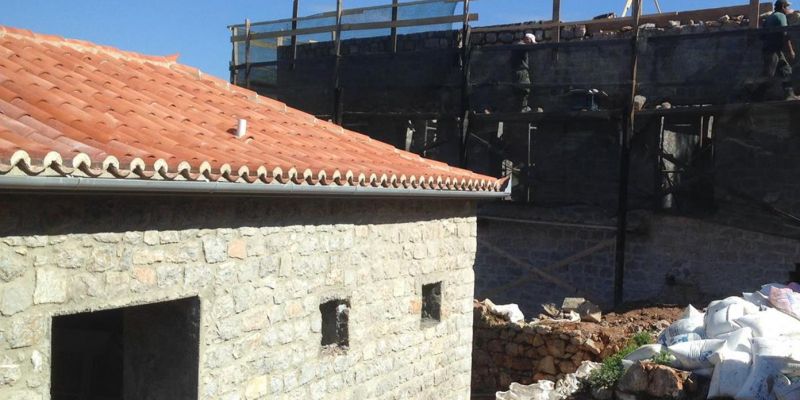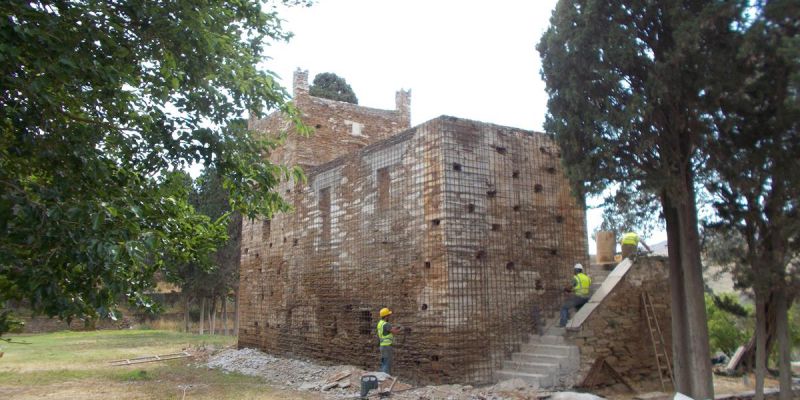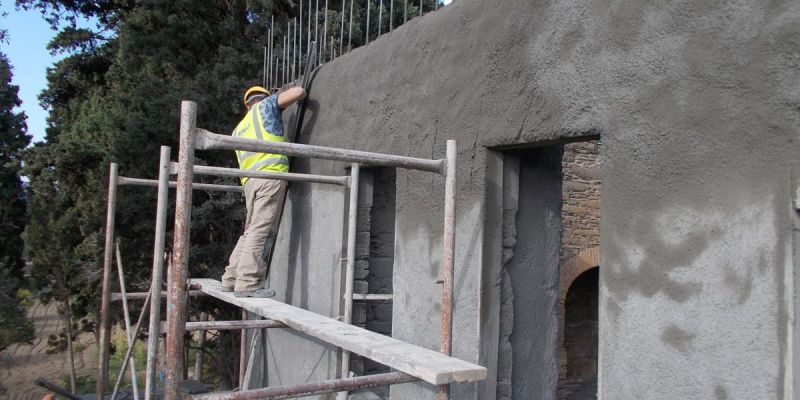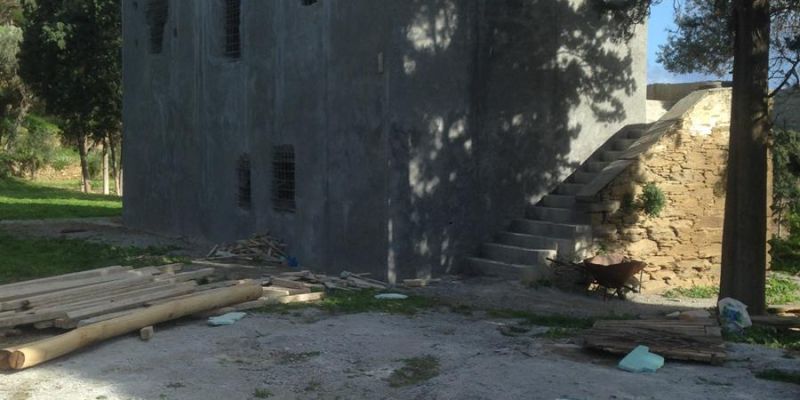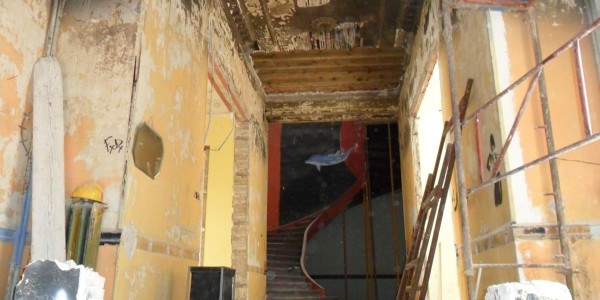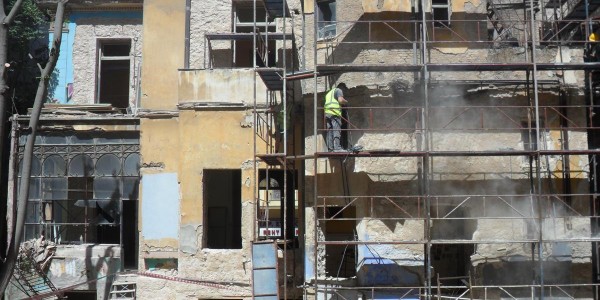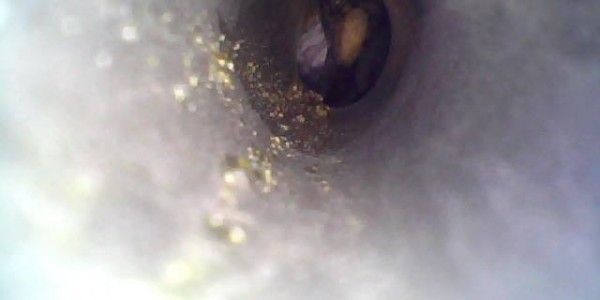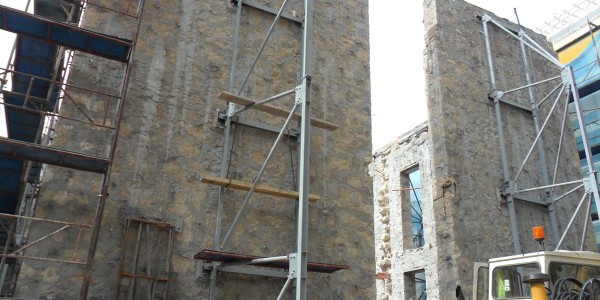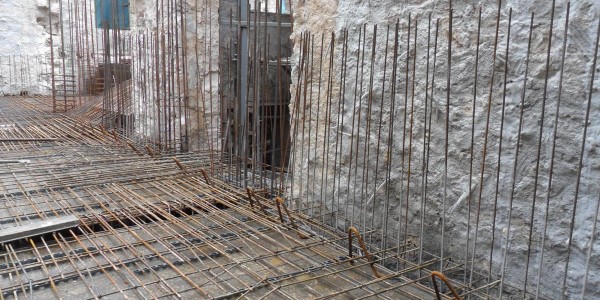After the installation of the scaffoldings around the bell tower, a rigorous inspection of the concrete bearing elements was carried out. Several damages were detected along the full height of the tower. A technical report was prepared, including the damage assessment and the proposed interventions along with the corresponding budget.
After the acceptance of the proposal, works started:
- Removal of the damaged concrete.
- Cleaning and protection of the steel reinforcement by applying corrosion inhibitors.
- Rehabilitation of the concrete elements with cement repair mortars.
- Strengthening of the columns and beams of the upper part of the bell tower with carbon fiber reinforced polymers (CFRP).


